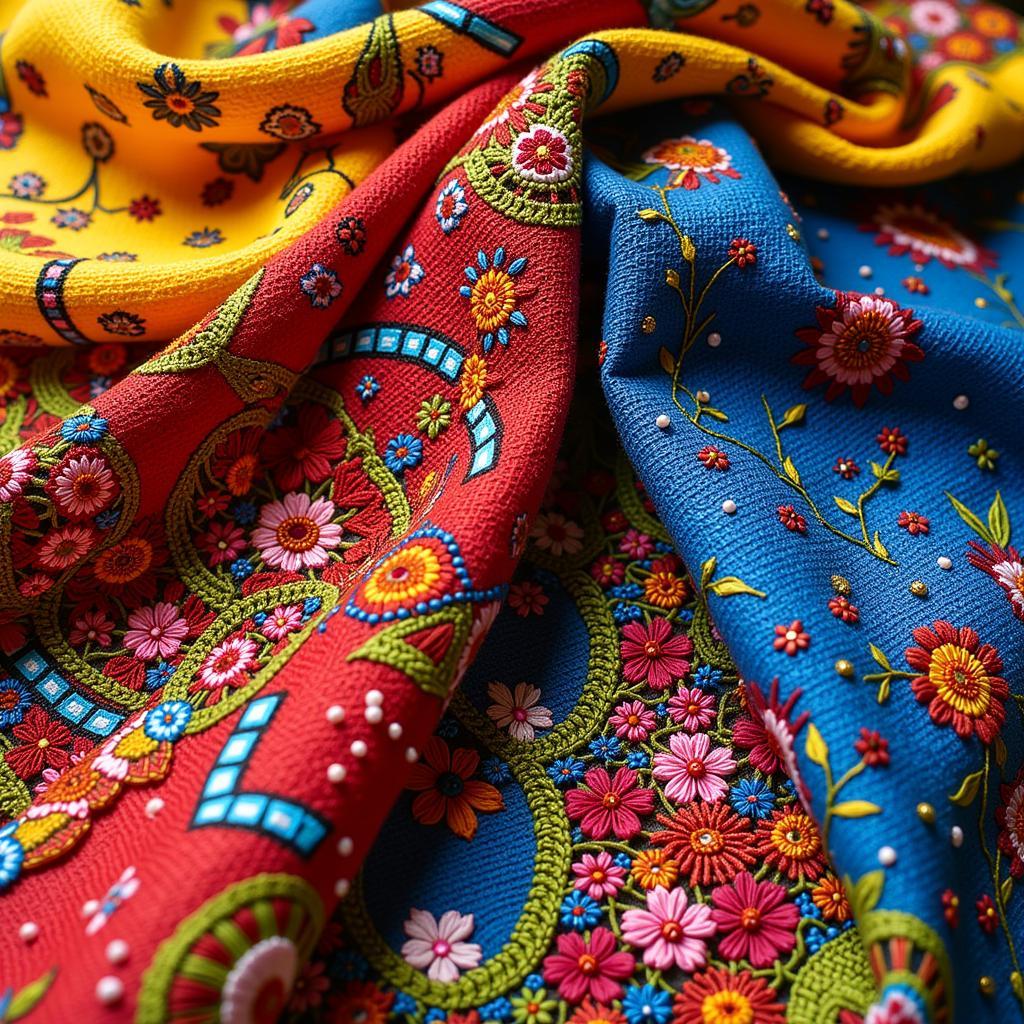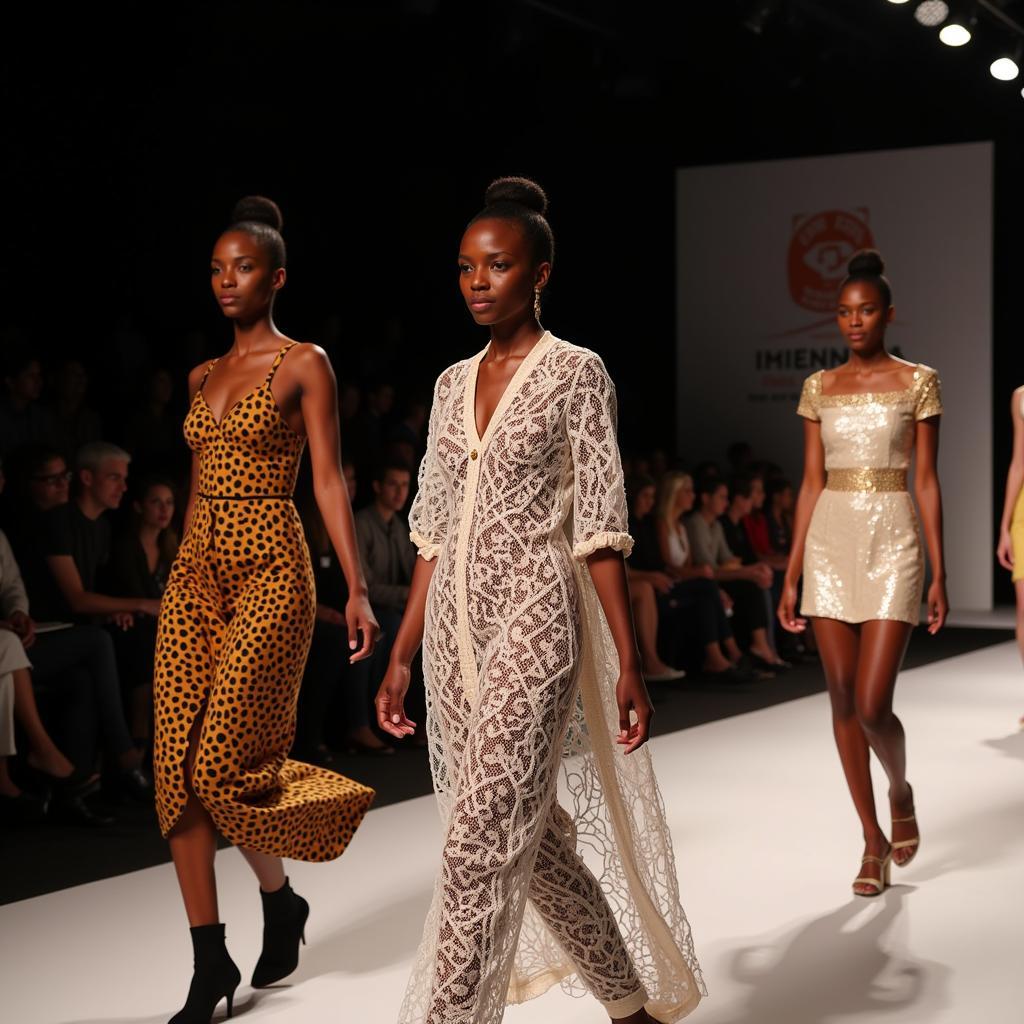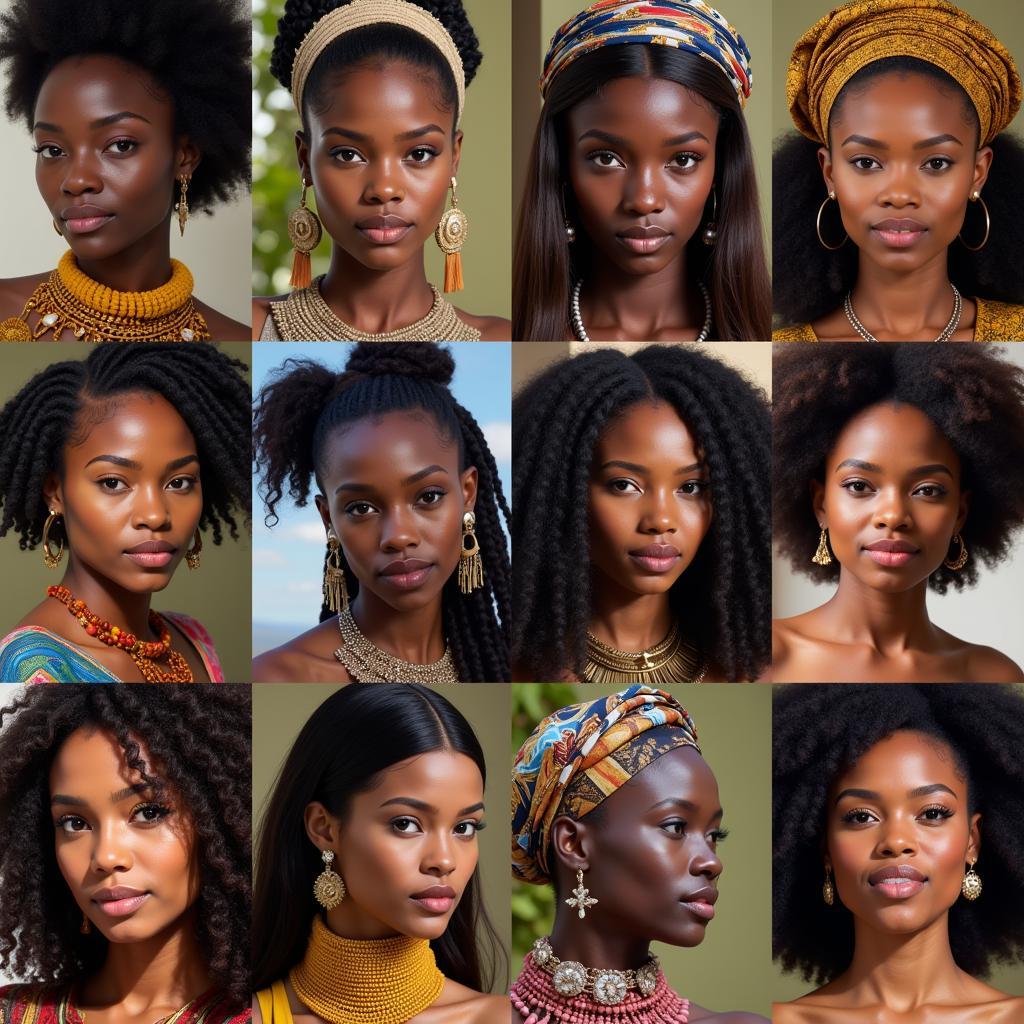African Lace Images: A Celebration of Color, Culture, and Craftsmanship
African lace, with its intricate patterns and vibrant colors, is more than just fabric. It’s a visual feast that tells stories of heritage, creativity, and a rich cultural tapestry. From the bustling markets of Accra to the ateliers of Lagos, African Lace Images capture the essence of a continent that’s both traditional and modern.
The Allure of African Lace Designs
The allure of African lace is undeniable. The intricate designs, often inspired by nature, history, and everyday life, are a testament to the creativity of African artisans. Whether it’s the geometric patterns of Aso Oke from Nigeria or the delicate floral motifs of Kente cloth from Ghana, each piece of lace tells a story. The use of bold, vibrant colors further enhances the visual impact, creating a symphony of hues that’s impossible to ignore.
The Cultural Significance of African Lace Images
African lace is deeply intertwined with the continent’s cultural identity. It plays a pivotal role in significant life events, from weddings and festivals to religious ceremonies. For instance, in Nigeria, Aso Ebi, which translates to “family cloth”, is a common sight at weddings. Family and friends of the couple don matching lace outfits, signifying unity and celebration.
 Close-up of colorful African lace fabric
Close-up of colorful African lace fabric
Beyond special occasions, African lace images reflect the dynamism of contemporary African fashion. Designers across the continent are reimagining traditional fabrics, blending them with modern silhouettes and styling to create unique and captivating looks.
Exploring Different Types of African Lace
The world of African lace is vast and diverse, with each region boasting its own unique styles and techniques. Let’s delve into some of the most popular types:
- Aso Oke: This hand-woven fabric from Nigeria is known for its intricate geometric patterns and vibrant colors.
- Kente Cloth: Originating from Ghana, Kente cloth is characterized by its colorful, interwoven strips, each pattern carrying a specific meaning or symbolism.
- Guipure Lace: This French-influenced lace, often referred to as “Venice lace,” is popular for its intricate, needlepoint-like designs and is often used for special occasion garments.
- George Lace: Originally from India, George lace has been embraced by many African countries, particularly Nigeria. It’s known for its embroidery work and is often embellished with sequins and beads.
The Global Impact of African Lace
 Models strutting down the runway in African lace creations
Models strutting down the runway in African lace creations
African lace has transcended geographical boundaries, captivating the global fashion scene. From high-end runways to everyday street style, its influence can be seen worldwide. Designers like Duro Olowu and Lisa Folawiyo have gained international acclaim for their innovative use of African lace, showcasing its versatility and timeless appeal.
Preserving Tradition, Inspiring Creativity
The artistry of African lace extends beyond its aesthetic appeal. It represents a legacy of craftsmanship passed down through generations. By supporting African lace artisans and promoting their work, we contribute to the preservation of these traditions and empower local communities.
Whether you’re drawn to the intricate patterns, the vibrant colors, or the cultural significance, African lace images offer a glimpse into the heart and soul of a continent. It’s a testament to the enduring power of creativity, heritage, and the human spirit.

